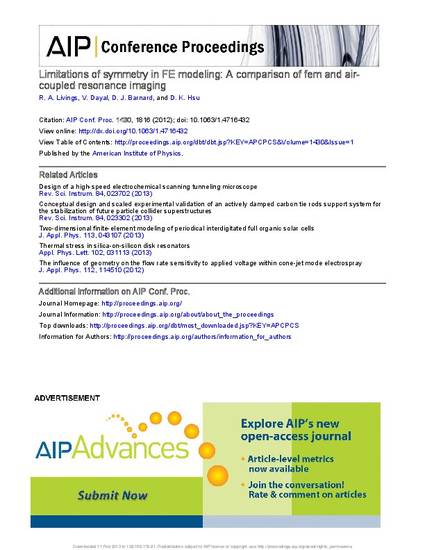
Presentation
Limitations of symmetry in FE modeling: A comparison of fem and air-coupled resonance imaging
Center for Nondestructive Evaluation Conference Papers, Posters and Presentations
Document Type
Conference Proceeding
Conference
Review of Progress in Quantitative Nondestructive Evaluation
Publication Date
7-1-2011
Geolocation
(44.4758825, -73.212072)
Abstract
It has long been an accepted practice to use symmetry in Finite Element Modeling. Whenever modeling a large structure, we turn to symmetry in order to significantly reduce the model size and computation time. But is symmetry always the solution to long computation times, and is it always accurate? This study is aimed at modeling a whole ceramic tile and several possible symmetric models under several different loading cases and comparing them to each other and Air-Coupled Ultrasonic scans to determine if the Finite Element Models can accurately predict the vibrational resonance patterns. The reason for the accuracy or inaccuracy will also be examined. The understanding of the limitations of using symmetry to model large structures will be very useful in all future modeling.
Copyright Owner
American Institute of Physics
Copyright Date
2012
Language
en
Citation Information
Richard A. Livings, Vinay Dayal, Daniel J. Barnard and David K. Hsu. "Limitations of symmetry in FE modeling: A comparison of fem and air-coupled resonance imaging" Burlington, VT(2011) Available at: http://works.bepress.com/vinay_dayal/1/
Copyright 2012 American Institute of Physics. This article may be downloaded for personal use only. Any other use requires prior permission of the author and the American Institute of Physics.
This article appeared in AIP Conference Proceedings 1430 (2012): 1816–1823 and may be found at http://dx.doi.org/10.1063/1.4716432.